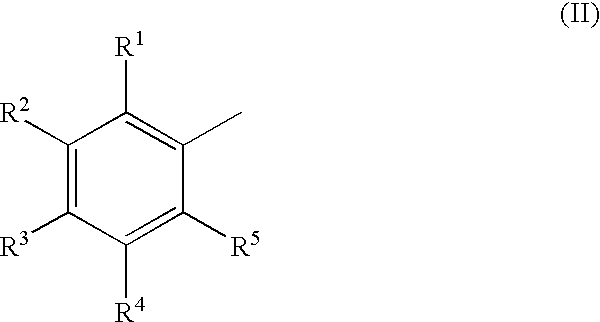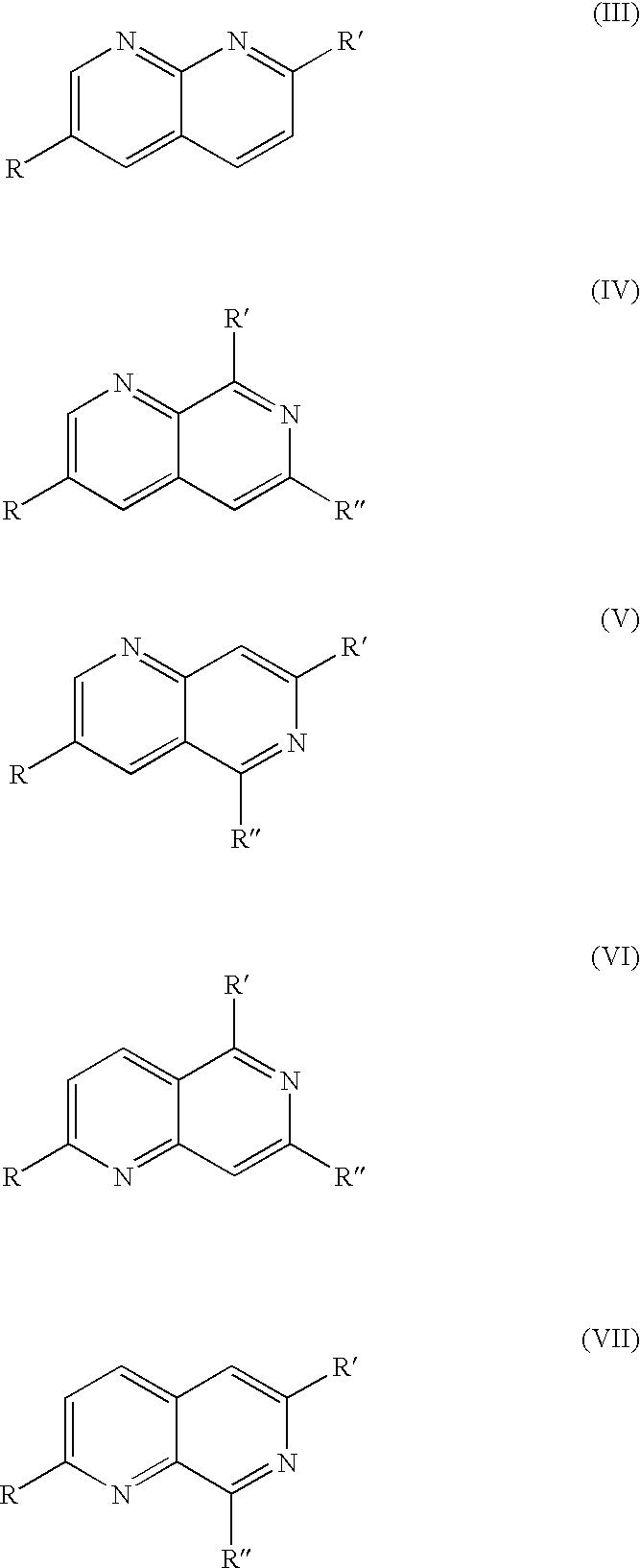Polyazanaphthalene compounds and pharmaceutical use thereof
a technology of polyazanaphthalene and compounds, applied in the field of medicine, can solve the problems of not being practicably used, not preventing the development of joint destruction, and seriously impaired patient life quality,
- Summary
- Abstract
- Description
- Claims
- Application Information
AI Technical Summary
Benefits of technology
Problems solved by technology
Method used
Image
Examples
example 1
Process for Producing 3-(3,4-Dimethoxyphenyl)-1,6-Naphtylidine
[0056] 4-amino-3-pyridinecarboxyaldehyde (153.7 mg, 1.26 mmol) was dissolved in methanol (3 ml). A solution of 28%-sodium methoxide-methanol (1 ml) and then a solution of 3,4-dimethoxyphenylacetaldehyde (338.4 mg, 1.88 mmol) in methanol (2 ml) were added thereto and they were stirred at room temperature for 13 hours. After concentrating the reaction mixture under reduced pressure and adding water, the mixture was extracted with ethyl acetate twice, and then dried over anhydrous sodium sulfate and concentrated under reduced pressure. The obtained product was purified by silica gel column chromatography (dichloromethane / methanol) to obtain example compound 1 in the form of white crystals (79 mg, 23%).
[0057] .sup.1H--NMR (300 MHz,CDCl.sub.3) .delta.=3.97 (3H, s), 4.01 (3H, s), 7.05 (1H, d, J=8.1 Hz), 7.21 (1H, d, J=2.1 Hz), 7.29 (1H, d, J=2.1, 8.1 Hz), 7.95 (1H, m), 8.37 (1H, dd, J=0.9, 2.4 Hz), 8.76 (1H, d, J=5.7 Hz), 9.34-...
example 2
Process for Producing 3-(2,4-Dimethoxyphenyl)-1,6-Naphthylidine
[0058] [1,1-bis(diphenylphosphino)ferrocene] dichloropalladium(II) dichloromethane complex (1:1) (12.3 mg, 15 .mu.mol), 1,1-bis(diphenylphosphino)ferrocene (8.3 mg, 15 .mu.mol), bis(pinacolate)diboron (140.0 mg, 0.55 mmol), 1-bromo-2,4-dimethoxybenzen- e (108.5 mg, 0.50 mmol) and potassium acetate (147.0 mg, 1.5 mmol) were dissolved in toluene (2 ml) and stirred under argon atmosphere at 80.degree. C. overnight. 3-Bromo-1,6-naphthylidine (52.3 mg, 0.25 mmol), [1,1-bis(diphenylphosphino)ferrocene] dichloropalladium(II) dichloromethane complex (1:1) (12.3 mg, 15 .mu.mol), water solution of 2.5M-sodium carbonate (1 ml) and dimethylformamide (0.5 ml) were added thereto and stirred at 80.degree. C. overnight. After the reaction was completed, water was added to the reaction mixture and the mixture was extracted with ethyl acetate. The obtained product was purified by silica gel column chromatography (hexane / ethyl acetate) to ...
example 3
Process for Producing 3-(3-Ethoxycarbonylphenyl)-1,6-Naphthylidine
PUM
| Property | Measurement | Unit |
|---|---|---|
| Density | aaaaa | aaaaa |
| Density | aaaaa | aaaaa |
| Density | aaaaa | aaaaa |
Abstract
Description
Claims
Application Information
 Login to View More
Login to View More - R&D
- Intellectual Property
- Life Sciences
- Materials
- Tech Scout
- Unparalleled Data Quality
- Higher Quality Content
- 60% Fewer Hallucinations
Browse by: Latest US Patents, China's latest patents, Technical Efficacy Thesaurus, Application Domain, Technology Topic, Popular Technical Reports.
© 2025 PatSnap. All rights reserved.Legal|Privacy policy|Modern Slavery Act Transparency Statement|Sitemap|About US| Contact US: help@patsnap.com



